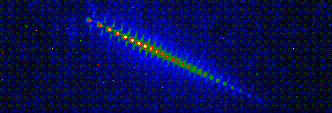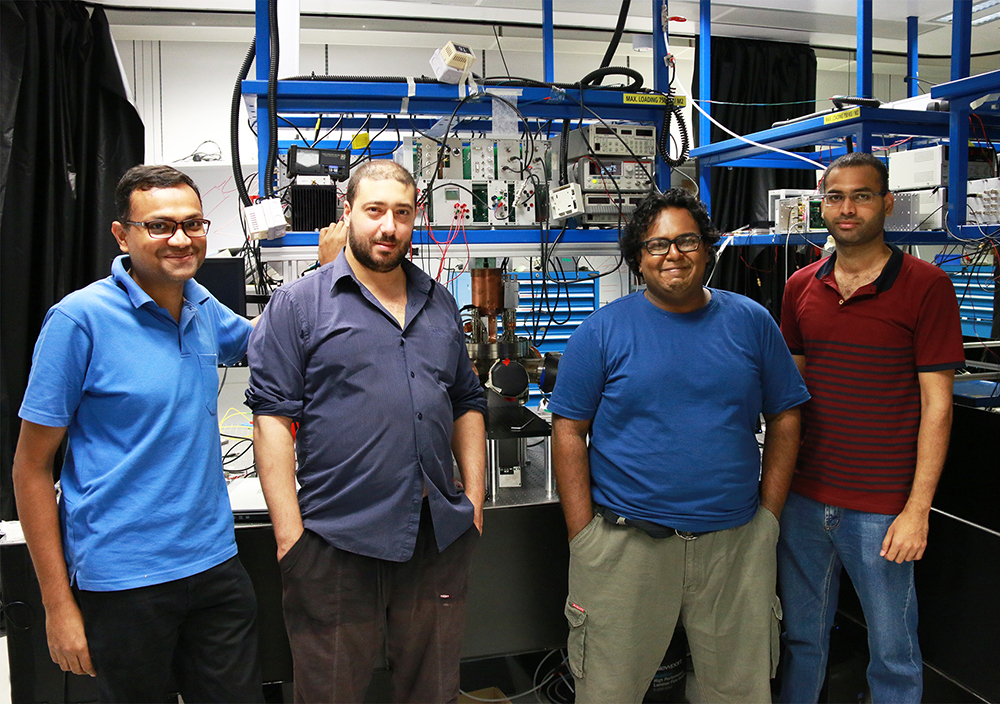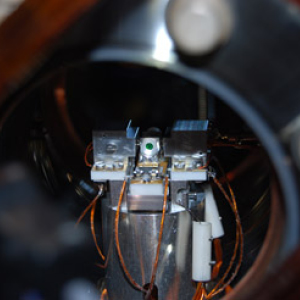Highlights
Exacting measurements on atoms do better than theory

Precision measurements on trapped Barium ions (pictured) in CQT researcher Manas Mukherjee's laboratory will inform the search for physics beyond the Standard Model

Manas (left) pictured with his group members (left-right) Riadh Rebhi, Debashis De Munshi and Tarun Dutta, coauthors on the team's new paper.
The equations of physics allow scientists to precisely calculate the properties of matter – in principle. In practice, the complexities of having many particles interacting with each other, even inside a single atom, mean that theoretical calculations typically involve simplifying assumptions. Different assumptions can lead to different results, so experiments are needed to constrain the values.
New measurements of Barium ions made at the Centre for Quantum Technologies (CQT) with precision better than one percent highlight how laboratory data can distinguish between theoretical calculations. The results, published in Physical Review A on 17 April as a Rapid Communication, are relevant to the search for physics beyond the Standard Model.
CQT Principal Investigator Manas Mukherjee and his group members measured the transition probabilities and branching fraction of a singly-charged Barium ion, 138Ba+, from an excited p-state to lower energy s and d states. Barium is a candidate for searching for physics beyond the Standard Model by measurement of its parity violation. The strength of the violation depends heavily on the transition probabilities. The branching fraction also features in calculations of the abundance of Barium in the solar and stellar atmospheres.
The 138Ba+ ion has a structure resembling the simplest atom, Hydrogen, because it has a single electron in an outer shell. But unlike Hydrogen which has only that one electron, in 138Ba+ there are many-body effects from its 136 inner electrons. It's these effects that theoretical calculations struggle to account for.
The team performed measurements on chains of 138Ba+ in a linear ion trap having from a few to 20 ions. The researchers achieved transition probabilities in agreement with but up to 6 times more precise than the previous best experimental results. Whereas all theoretical values fell within the uncertainty bars on previous experimental values, the new measurement distinguishes between them.
Manas says his group is moving on to making precision measurements of other features of 138Ba+relevant to studying parity violation. "We have a programme that is longer term," he says.







